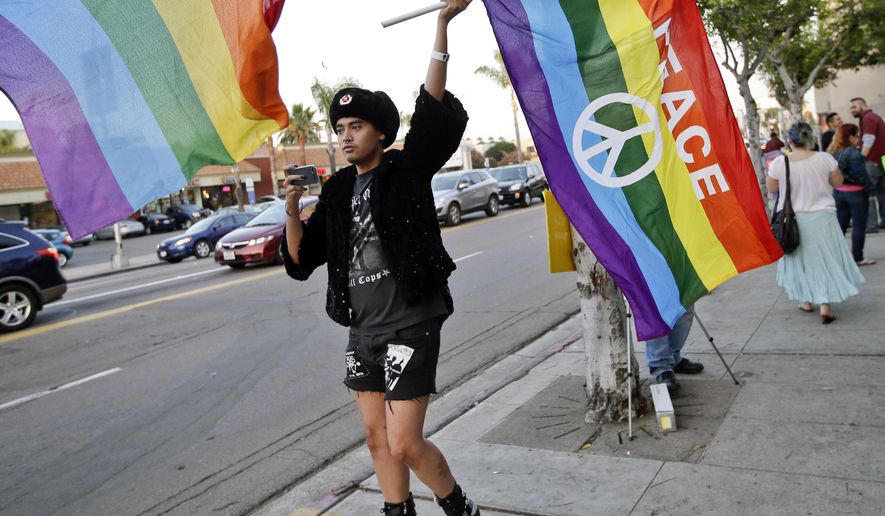Less than 3 percent of the adult U.S. population is a sexual minority, the federal government says in a new report that asks people about their sexual orientation and health.
About 97 percent of the adult U.S. population, or 224 million people, described themselves as “straight” or heterosexual, the National Center for Health Statistics said in a new study on sexual orientation data in the National Health Interview Survey (NHIS).
Another 5.6 million adults said they were gay or lesbian (1.6 percent), bisexual (0.7 percent) or “something else” (0.2 percent).
Another group, representing about 1 million adults, refused to answer sexual-orientation questions, while another 879,000 said they didn’t “know” the answers to the questions.
Researchers are eager to understand sexual-minority populations and especially their health issues.
But these population groups are so small and diverse that it has been difficult to craft sexual-orientation questions that all respondents can easily grasp and answer correctly, James M. Dahlhamer and colleagues wrote in their new report on the NHIS.
For instance, of the nearly 34,000 adults interviewed in the NHIS, 155 people said they didn’t “know” their sexual orientation, while another 56 people said they were “something else,” other than straight, gay, lesbian or bisexual.
Upon further questioning, most of these 211 people said they were still figuring themselves out, didn’t like labels or didn’t think of themselves “as having sexuality.”
But at least two people decided they were “queer, trisexual, omnisexual or pansexual,” and three people said they were “transgender, transsexual or gender variant.”
Researchers cautioned that because many of the survey numbers were very small, there were wide margins of error and their estimates of national prevalence “should be used with caution.”
Broken down by gender, the new NHIS report said 1.8 percent of U.S. men, or about 2 million, said they were “gay.”
Another 0.4 percent, or 481,000 men, said they were “bisexual,” while 0.2 percent of 196,000 were “something else.”
Among women, 1.4 percent (1.7 million women) said they were lesbian, 0.9 percent (1 million women) said they were bisexual, and 0.2 percent (204,000 women) said they were “something else.”
The NHIS further asked people about their health status, body mass index, HIV testing history, and access to health care.
It found that gay men (79 percent) were far more likely to get HIV testing than straight men (37 percent) or bisexual men (42 percent). Among women, slightly more than half of all orientations had been tested for HIV at least once.
On health status, straight women (71 percent) were most likely to rate themselves as in “excellent” or “very good” health, compared with lesbians (56 percent) or bisexual women (61 percent). About 70 percent of men in all categories ranked themselves so highly.
Obesity was found to be higher in bisexual women (39 percent) and lesbians (37 percent) than straight women (26 percent), but only in a fifth or a quarter of men.
At least two-thirds of men and women in all categories said they had access to health care.
The NHIS, which asked about sexual orientation for the first time in 2013, is the third federal source of data on sexual orientation. The 2006-2010 National Survey of Family Growth and 2009-2012 National Health and Nutrition Examination Survey also collect data on sexual minorities.
• Cheryl Wetzstein can be reached at cwetzstein@washingtontimes.com.




Please read our comment policy before commenting.